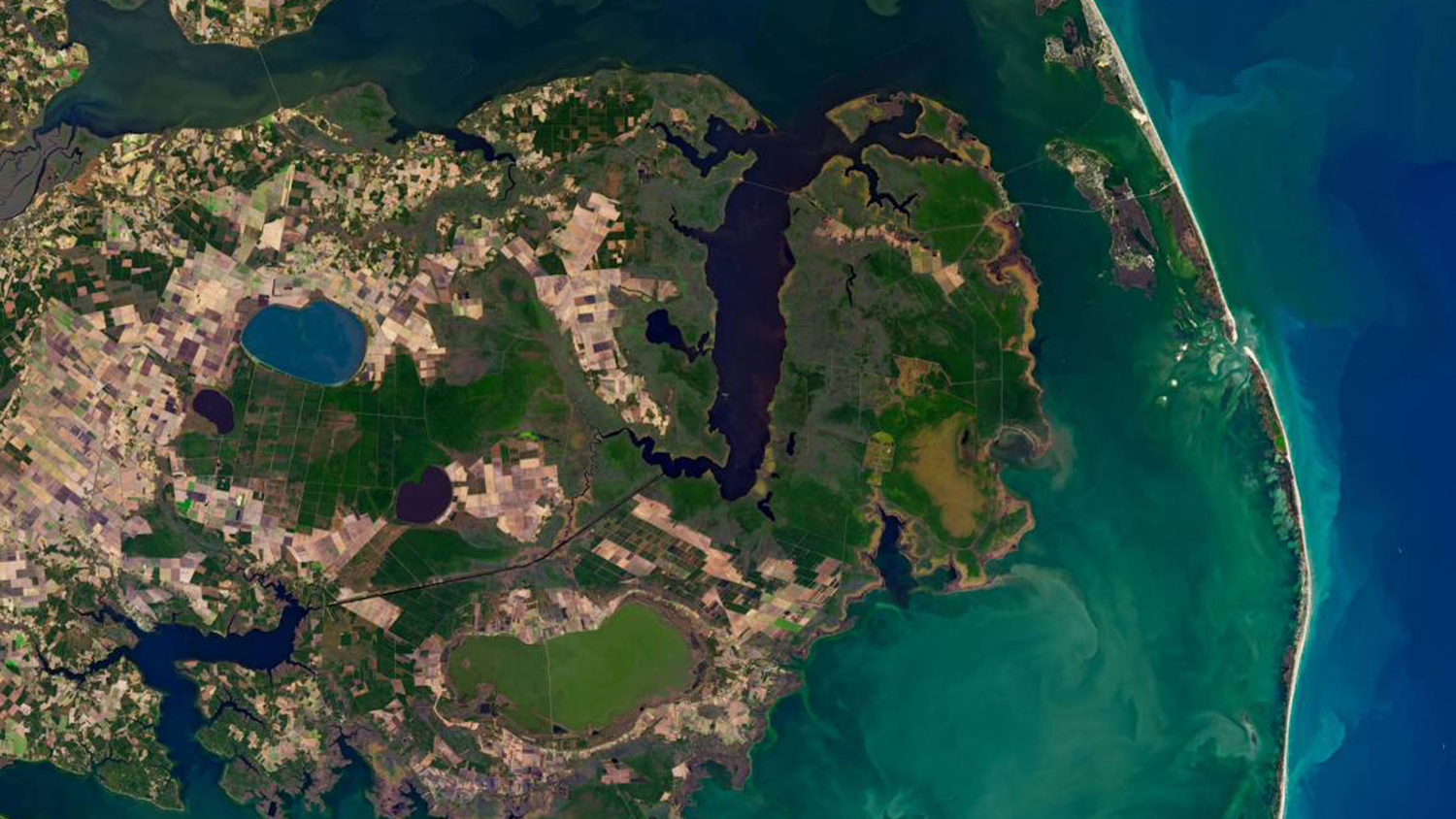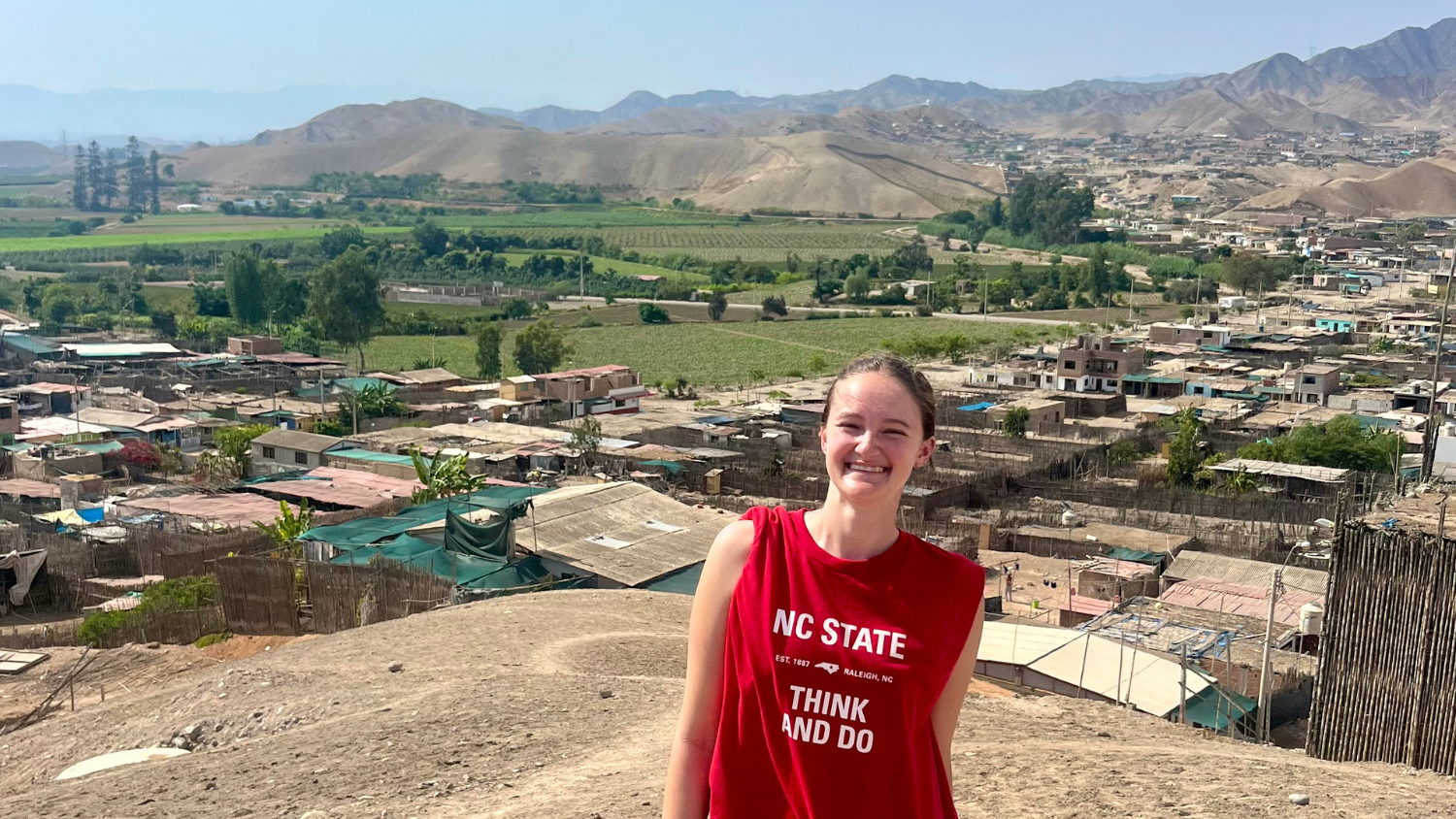Environmental Analysis Course Gives Students Hands-on Research Experience

This spring, as part of the ES400: Analysis of Environmental Issues course, a group of NC State students worked with faculty and external partners to study a variety of environmental issues — from sea level rise along the North Carolina coastline to the impact of COVID-19 on women in forestry.
Taught in the fall and spring semesters by instructors in the Environmental Sciences program, the capstone course enlist faculty sponsors from across the university to support small teams of students as they work with external agencies and organizations to address projects of interest.
“A lot of times, the students have never been in a class where the professor doesn’t know the answers to the questions being placed in front of them,” said course instructor George Hess, a professor of forestry and environmental resources. “In this course, they are presented with questions that people don’t know the answers to, which is why they’re asked.”
During the last two weeks of the course, students present their findings in 20-minute presentations and then respond to inquires during brief Q-and-A sessions. In the future, Hess hopes to establish more direct connections to external partners who can also bring projects to the table.
“This is a really great opportunity for students to try their hand at working on real challenges that people want the answers to,” Hess said. “This gives them a better idea of what they will be facing when they graduate, whether in future positions or graduate school.”
Recent graduate Olivia Gregg and a team of four other students explored how rising sea levels pose a danger to North Carolina’s coastal ecosystems, sponsored by Maricar Aguilos in the Department of Forestry and Environmental Resources.
For this project, the students utilized eddy covariance data from the Alligator River National Wildlife Refuge to explore the changes in gross primary productivity, net ecosystem exchange, and respiration that occur as a result of the forest dying.
The students also investigated how the greater occurrence of ghost forests — forests of dead trees killed by saltwater intrusion — connects to sea level rise, and what that means exactly for the future of the state’s coastal forests.
“Although it’s heartbreaking to think of what the future holds, it makes our research more meaningful because it is right here,” Gregg said. “I think that these studies are an important tool for communicating to North Carolinians about climate change.”
The project ultimately allowed Gregg to explore the field of environmental science before starting her internship experience with the National Park Service’s Scientists in Parks program.
“Not only did this course teach professional skills, but it also gave me the opportunity to work with a great team and to open my eyes further to all of the opportunities that are out there,” Gregg said.
She added, “My position after graduation is in education and outreach, but I intend to someday return to school for a master’s degree, and learning about all of these different projects has given me some idea of what I may like to study.”
Meanwhile, recent graduate Ilene Doyle and her team examined the blue holes of the Bahamas, which are created from large sinkholes formed in limestone and filled with fresh and saltwater. The project was sponsored by Brian Langerhans in the Department of Biology.
Doyle, whose team devised a ranking system via an interactive web map to determine the most important sites in the Bahamas for conservation, said the project inspired her to continue pursuing a career in research.
“It was a great opportunity to work with a researcher who was very passionate about his area of study and highly knowledgeable,” she said. “I know that sometimes in school, we can forget the real purpose of our studies; for me, it is to become a scientist to create positive change in the world.”
In addition to the projects led by Gregg and Doyle, recent graduate Layne Randolph and two other students studied the impacts of COVID-19 on women in the field of forestry, sponsored by Leah Rathbun in the Department of Forestry and Environmental Resources.
The students analyzed various impacts, from increased feelings of stress and anxiety to health and safety priorities. With their collected data, they looked for trends and patterns to draw conclusions regarding how women in forestry have been affected by the pandemic.
“I chose this project because the forestry field is near and dear to my heart,” Randolph said. “Being a woman studying forestry during the pandemic, I was interested to see how others in the profession had been impacted.”
Randolph added that skills learned during the course and Hess’ strong advocacy of student growth and input helped prepare her for a career in natural resources in a multitude of ways.
“Dr. Hess preached life skills such as interviewing tips and resume building during this course,” she said. “Advice on those topics is under-appreciated and not always taught firsthand so it was comforting to have a professor dedicated to those tips and tricks.”
- Categories:


